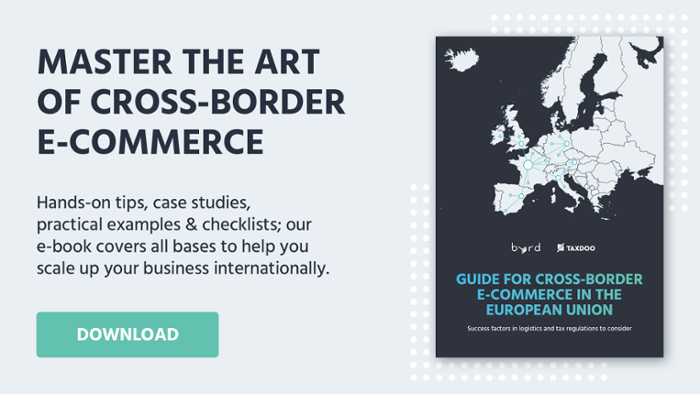Pros and Cons of eBay for E-commerce
Table of Content
Do you want to use eBay as an additional or even main sales channel for your business, but don't know how to work with this marketplace and whether it will be profitable to sell on eBay? In this article, we've outlined the main pros and cons of eBay so you can decide if it's right for you.
Let's cut to the chase.
Key insights into what eBay is
From a business-to-business auction site to a business-to-consumer marketplace, eBay has become one of the most popular online platforms to sell on today. Judge for yourself: As of the second quarter of 2023, eBay had about 132 million active buyers and about 18 million sellers. Most sellers are from the United States, followed by the United Kingdom, Germany and China.
Among all online marketplaces, eBay is the second most visited after Amazon. Even more interesting is the fact that about 61% of sales on eBay are made via mobile devices. What does that mean? It means you can reach your target audience effortlessly.
Despite all the mind-blowing statistics above, eBay has its pros and cons for businesses. Let's find out more about it.
Pros of selling on eBay for E-commerce
Below we've outlined why eBay is the place to be.
It's a good place to start
eBay is a good place to start, especially if you're just getting started with third-party marketplaces. Turning to eBay at the beginning of your online selling journey is like creating an MVP of your product. First, you test the waters with an MVP, and only then do you move on to the months-long development process.
What's more, eBay offers instant payment for items sold. And, as you may know, one of the most pressing issues businesses face is getting paid immediately after a sale. With eBay, you can make money fast.
eBay protects users' sensitive financial information by encrypting PayPal account or credit card information. As a result, sellers and buyers alike feel safe and secure when making transactions.
Secure transactions are in place
There is another way to protect transactions on eBay. This is the Verified Rights Owner (VeRO) program, which is designed to protect intellectual property (IP) rights. It allows you to track unauthorized use of trademarks, images, text, and other media that violates the rights of the owner. The VeRO program promotes a safe selling and buying environment and a culture of mutual respect among eBay users.

In addition, eBay sellers can benefit from guidance on safe selling practices and, if necessary, detailed dispute resolution procedures to resolve any issues that may
eBay is easy to use
Using eBay is not rocket science. Even non-technical users can navigate the site's interface. Plus, eBay offers an easy-to-use guide for first-time sellers, templates, and tips for creating more appealing listings that boost sales. The eBay mobile app is just as easy to use and allows you to sell on the go.
Undoubtedly, eBay's advantages also include a huge base of active users, as mentioned above, and a leading position in the ratings of reliable online marketplaces.
Cons of selling on eBay for eCommerce
Now let's take a look at why you shouldn't sell on eBay or what roadblocks you might encounter.
You have to work hard to maintain a high seller level
All eBay sellers are given a certain level, namely:
- Top-rated seller
- Above standard seller
- Below standard seller.
Each new seller registered with eBay is assigned a Standard level. Depending on how a seller performs on eBay, their level will change accordingly. This marketplace strives to provide excellent customer satisfaction, so it keeps a close eye on how well your business performs.
On the one hand, this rating indicates the quality of the seller's work and helps buyers avoid mistakes when choosing a seller. On the other hand, sellers are expected to constantly improve their work, advertise, increase sales, complete transactions successfully, deliver goods on time, etc. It takes a lot of work to make your eBay marketplace profitable.
To sell on eBay, you need to pay
In order to get the most out of eBay, you must pay a commission on each sale. Because of these fees, you may not get all the benefits of selling on eBay. So before you start using this marketplace, find out how much you will pay for each sale you make or item you list.
There are two main types of fees on eBay:
- Listing Fee. You pay this fee for each item you list for sale on eBay;
- Final Value Fee. This fee is charged when an item is sold and is a percentage of the total sale price plus $0.30 per item. The final value fee covers all third-party costs such as taxes, shipping, etc.
The fees charged by eBay are based on factors such as item price, listing category, additional listing updates, and seller performance.
You need to know how to ship internationally
eBay is an online marketplace that can be accessed from anywhere in the world, so you'll need to ship items all over the world. It's not a walk in the park:
- Each item requires special packaging;
- The seller must know and comply with country-specific shipping regulations;
- The seller must be familiar with customs procedures and be responsible for lost goods or late delivery;
- The seller must understand international duties, taxes, and other tariffs.
In trying to deliver the product in the most trouble-free manner, the seller often has to lower the price, which can result in a loss of revenue and lower store profitability.
Hopefully, now that you know the pros and cons of selling on eBay, it will be easier for you to decide if this marketplace is right for your business. If you want to sell on eBay but are confused by some of eBay's shortcomings, do a little homework. Make sure you read eBay's rules, ask support questions, and look for success stories about selling on eBay. All of these things will add to the big picture and make your decision much easier.
